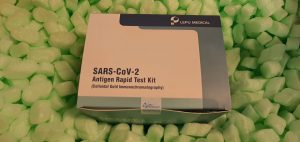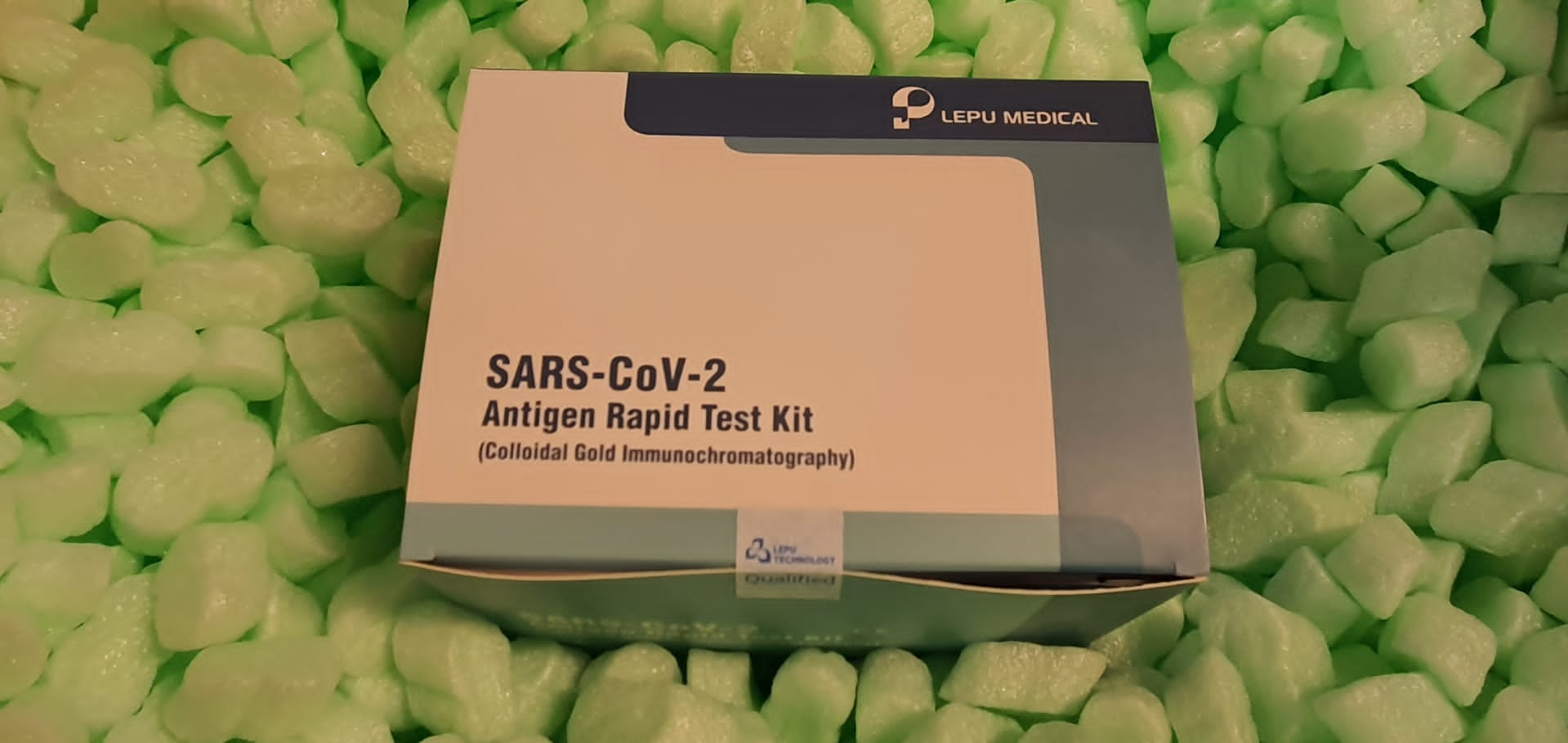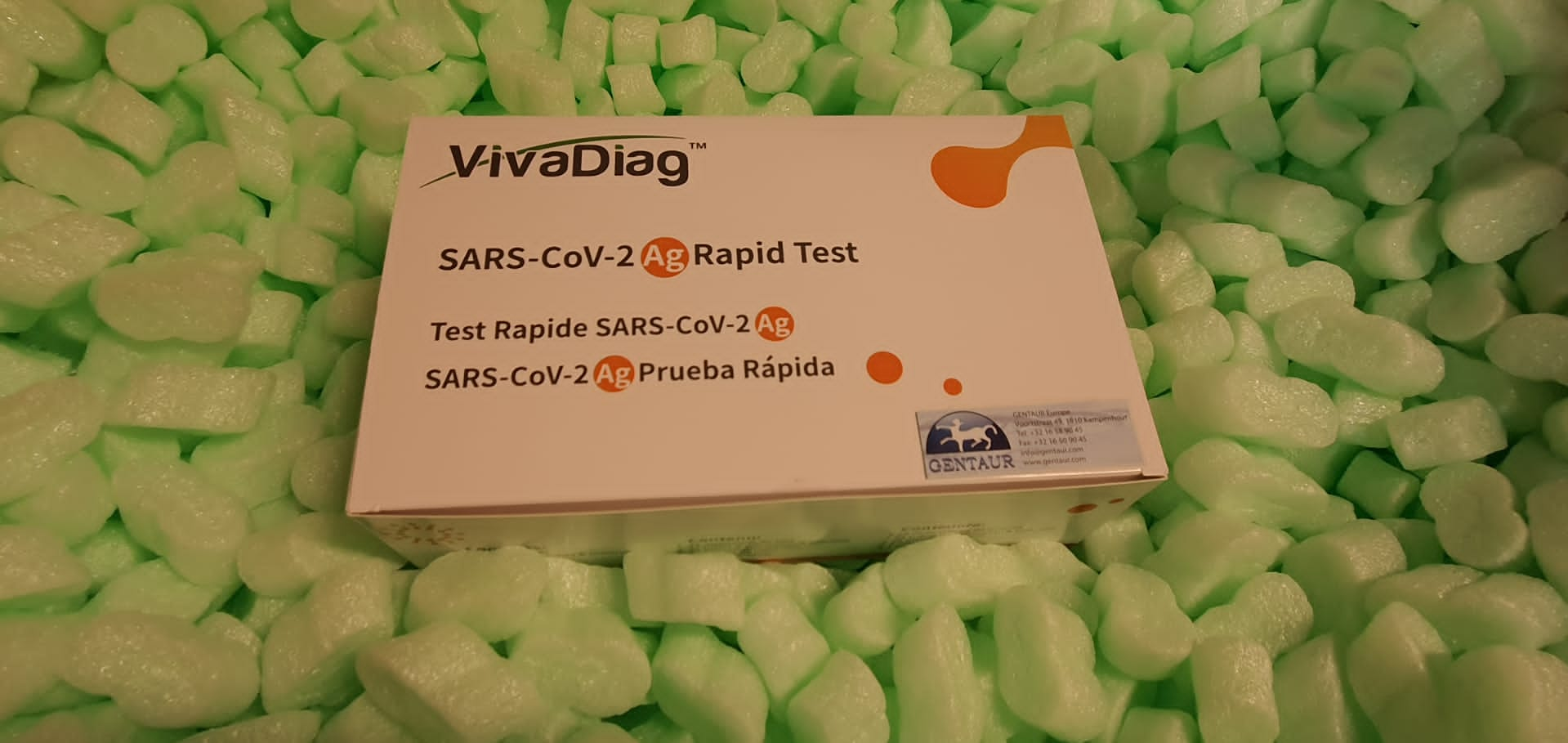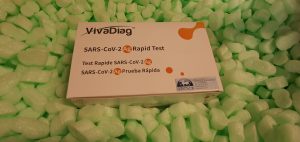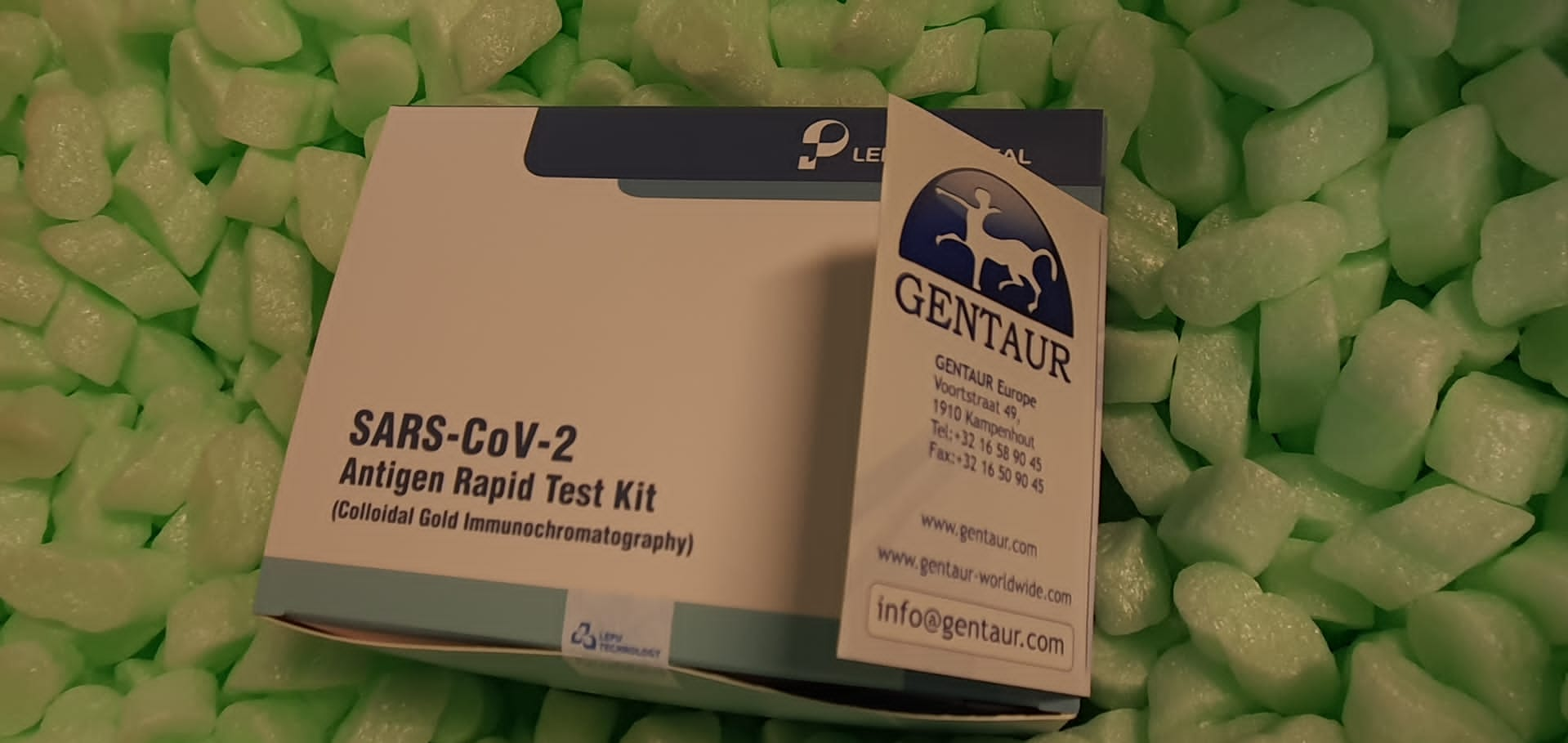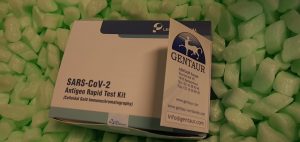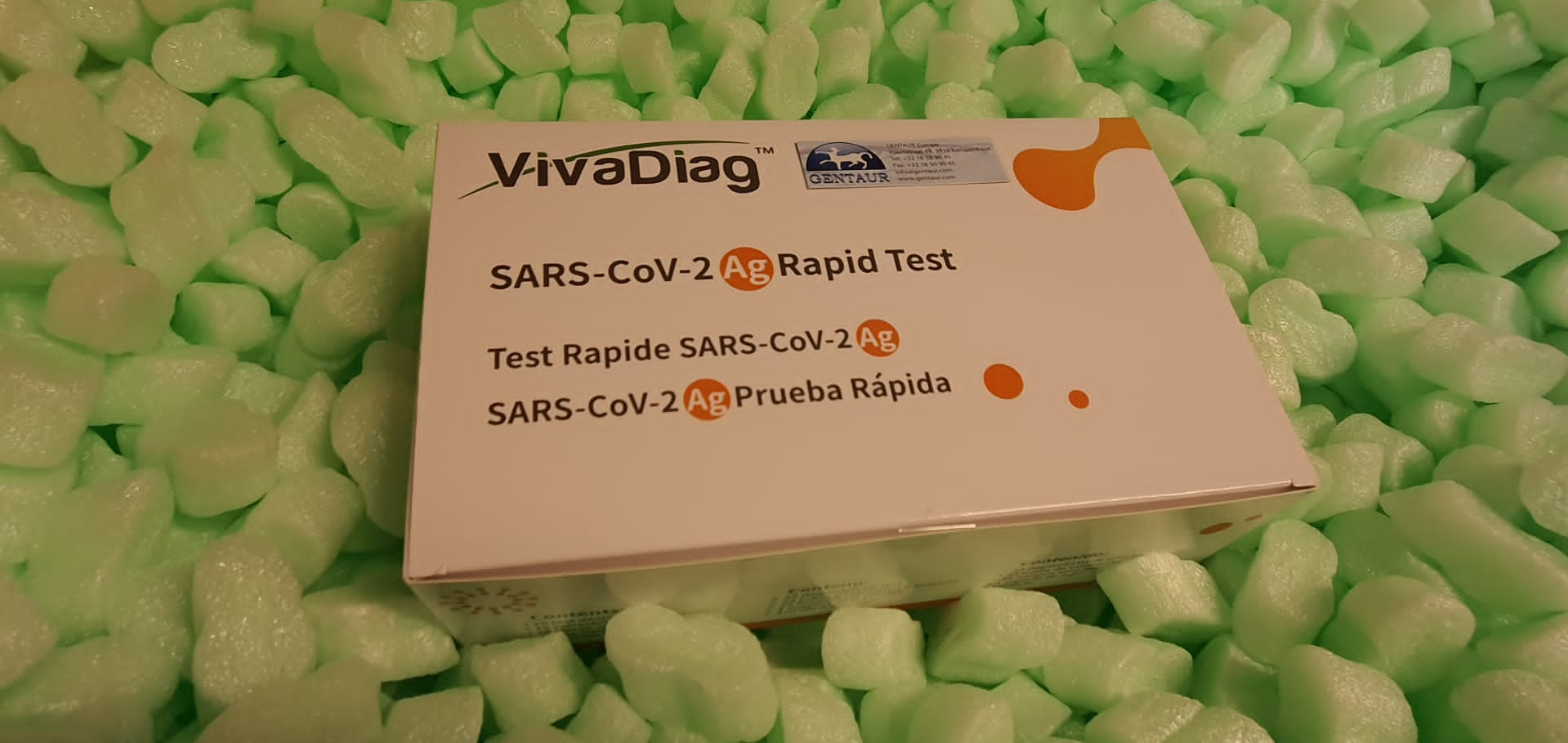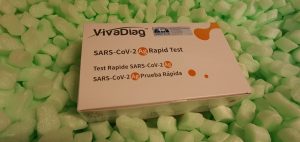Despite a large body of literature investigating how the environment influences health outcomes, most published work to date includes only a limited subset of the rich clinical and environmental data that is available and does not address how these data might best be used to predict clinical risk or expected impact of clinical interventions. Identify existing approaches to inclusion of a broad set of neighborhood-level risk factors with clinical data to predict clinical risk and recommend interventions. A systematic review of scientific literature published and indexed in PubMed, Web of Science, Association of Computing Machinery (ACM) and SCOPUS from 2010 through October 2020 was performed.
To be included, articles had to include search terms related to Electronic Health Record (EHR) data Neighborhood-Level Risk Factors (NLRFs), and Machine Learning (ML) Methods. Citations of relevant articles were also reviewed for additional articles for inclusion. Articles were reviewed and coded by two independent reviewers to capture key information including data sources, linkage of EHR to NRLFs, methods, and results. Articles were assessed for quality using a modified Quality Assessment Tool for Systematic Reviews of Observational Studies (QATSO).
A total of 334 articles were identified for abstract review. 36 articles were identified for full review with 19 articles included in the final analysis. All but two of the articles included socio-demographic data derived from the U.S. Census and we found great variability in sources of NLRFs beyond the Census. The majority or the articles (14 of 19) included broader clinical (e.g. medications, labs and co-morbidities) and demographic information about the individual from the EHR in addition to the clinical outcome variable.
Half of the articles (10) had a stated goal to predict the outcome(s) of interest. While results of the studies reinforced the correlative association of NLRFs to clinical outcomes, only one article found that adding NLRFs into a model with other data added predictive power with the remainder concluding either that NLRFs were of mixed value depending on the model and outcome or that NLRFs added no predictive power over other data in the model. Only one article scored high on the quality assessment with 13 scoring moderate and 4 scoring low.
In spite of growing interest in combining NLRFs with EHR data for clinical prediction, we found limited evidence that NLRFs improve predictive power in clinical risk models. We found these data and methods are being used in four ways. First, early approaches to include broad NLRFs to predict clinical risk primarily focused on dimension reduction for feature selection or as a data preparation step to input into regression analysis. Second, more recent work incorporates NLRFs into more advanced predictive models, such as Neural Networks, Random Forest, and Penalized Lasso to predict clinical outcomes or predict value of interventions.
Third, studies that test how inclusion of NLRFs predict clinical risk have shown mixed results regarding the value of these data over EHR or claims data alone and this review surfaced evidence of potential quality challenges and biases inherent to this approach. Finally, NLRFs were used with unsupervised learning to identify underlying patterns in patient populations to recommend targeted interventions. Further access to computable, high quality data is needed along with careful study design, including sub-group analysis, to better determine how these data and methods can be used to support decision making in a clinical setting.
Rapid online teaching: movement of animal science courses online during COVID-19. Case study: pedagogical decisions in transitioning animal science courses online
Traditionally, earning a degree in animal science requires many face-to-face, hands-on courses; however, the COVID-19 pandemic created a situation in which traditional delivery of these courses may not be feasible as they provide a health risk to our students, teaching assistants, and instructors alike. This examination of two pedagogically different courses and how each was transitioned to an online format highlights the types of teaching decisions that are required to effectively teach animal science in an online format. The Farm Animal Production Systems lab was an animal handling and production practices lab, and although the transition to online delivery did not allow for students to participate in traditional hands-on development of skills, various resources were utilized that still achieved the development of animal handling concepts that will prepare students for later courses and work with live animals.
 (Fc)) IgG Antibody (Goat anti Mouse) (Fc) |
|
GWB-D17EA6 |
GenWay Biotech |
2 mg |
Ask for price |
 (Fc)) IgG Antibody (Goat anti Mouse) (Fc) |
|
GWB-BEA930 |
GenWay Biotech |
1 mg |
Ask for price |
 (Fc)) IgG Antibody (Goat anti Mouse) (Fc) |
|
GWB-D6570C |
GenWay Biotech |
1 mg |
Ask for price |
 (Fc)) IgG Antibody (Goat anti Mouse) (Fc) |
|
GWB-D8C9F1 |
GenWay Biotech |
2 mg |
Ask for price |
 (Goat Anti Mouse)) IgG Antibody (Fab) (Goat Anti Mouse) |
|
GWB-5815F1 |
GenWay Biotech |
2 mg |
Ask for price |
|
|
 (H&L)) IgG Antibody (Goat anti Mouse) (H&L) |
|
GWB-5E5A80 |
GenWay Biotech |
0.5 mg |
Ask for price |
 (H&L)) IgG Antibody (Goat anti Mouse) (H&L) |
|
GWB-63EAAC |
GenWay Biotech |
1.5 ml |
Ask for price |
 (H&L)) IgG Antibody (Goat anti Mouse) (H&L) |
|
GWB-F79A58 |
GenWay Biotech |
1.5 ml |
Ask for price |
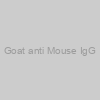 Goat anti Mouse IgG |
|
20-B9015G000-S0 |
Fitzgerald |
10 ml |
EUR 95 |
|
|
|
Description: Goat anti Mouse IgG antibody |
 Goat anti Mouse IgG |
|
20-S8301G000-V0 |
Fitzgerald |
10 ml |
EUR 95 |
|
|
|
Description: Goat anti Mouse IgG antibody |
 Goat anti Mouse IgG |
|
41R-1058 |
Fitzgerald |
2 mg |
EUR 127 |
|
|
|
Description: Goat anti Mouse IgG secondary antibody |
 Goat anti Mouse IgG |
|
41-GM25 |
Fitzgerald |
20 mg |
EUR 100 |
|
|
|
Description: Goat anti Mouse IgG secondary antibody |
 Goat anti Mouse IgG |
|
40-GM25S |
Fitzgerald |
100 ml |
EUR 95 |
|
|
|
Description: Goat anti Mouse IgG secondary antibody |
 Goat anti Mouse IgG |
|
40-S8301G000-S4 |
Fitzgerald |
10 ml |
EUR 95 |
|
Description: Goat anti Mouse IgG secondary antibody |
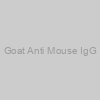 Goat Anti Mouse IgG |
|
E61I00501 |
EnoGene |
100ug |
EUR 225 |
 Antibody) Goat Anti-Mouse IgG (Fc) Antibody |
|
abx023402-5mg |
Abbexa |
5 mg |
EUR 594 |
|
|
 Antibody) Goat Anti-Mouse IgG (Fc) Antibody |
|
abx023405-2mg |
Abbexa |
2 mg |
EUR 526.8 |
|
|
 Antibody) Goat Anti-Mouse IgG (Fc) Antibody |
|
abx023407-2mg |
Abbexa |
2 mg |
EUR 493.2 |
|
|
 Antibody) Goat Anti-Mouse IgG (Fc) Antibody |
|
abx023543-1mg |
Abbexa |
1 mg |
EUR 627.6 |
|
|
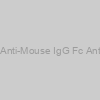 Goat Anti-Mouse IgG Fc Antibody |
|
abx023402-400l |
Abbexa |
400 µl |
Ask for price |
 Goat Anti-Mouse IgG Fc Antibody |
|
abx023402-80l |
Abbexa |
80 µl |
EUR 987.5 |
 Goat Anti-Mouse IgG Fc Antibody |
|
abx023407-400l |
Abbexa |
400 µl |
Ask for price |
 Goat Anti-Mouse IgG Fc Antibody |
|
abx023407-80l |
Abbexa |
80 µl |
EUR 425 |
) Goat Anti-Mouse IgG Antibody (PE) |
|
abx401034-100g |
Abbexa |
100 µg |
EUR 425 |
) Goat Anti-Mouse IgG Antibody (PE) |
|
abx401556-100g |
Abbexa |
100 µg |
EUR 487.5 |
) Goat Anti-Mouse IgG Antibody (HRP) |
|
20-abx400001 |
Abbexa |
-
Ask for price
-
Ask for price
-
Ask for price
|
|
|
|
) Goat anti-Mouse IgG Antibody (RPE) |
|
abx401034-05mg |
Abbexa |
0.5 mg |
EUR 644.4 |
|
|
) Goat anti-Mouse IgG Antibody (RPE) |
|
abx401556-1ml |
Abbexa |
1 ml |
EUR 727.2 |
|
|
) Goat Anti-Mouse IgG Antibody (HRP) |
|
abx400001-100g |
Abbexa |
100 µg |
EUR 350 |
) Goat Anti-Mouse IgG Antibody (FITC) |
|
20-abx400031 |
Abbexa |
-
Ask for price
-
Ask for price
-
Ask for price
|
|
|
|
) Goat anti-Mouse IgG Antibody (BGAL) |
|
abx401031-1ml |
Abbexa |
1 ml |
EUR 444 |
|
|
) Goat Anti-Mouse IgG Antibody (FITC) |
|
abx400031-100g |
Abbexa |
100 µg |
EUR 337.5 |
) Goat Anti-Mouse IgG Antibody (FITC) |
|
abx401027-10g |
Abbexa |
10 µg |
EUR 300 |
) Goat Anti-Mouse IgG Antibody (BGAL) |
|
abx401031-100g |
Abbexa |
100 µg |
EUR 325 |
) Goat Anti-Mouse IgG Antibody (TRITC) |
|
abx019213-01ml |
Abbexa |
0.1 ml |
EUR 292.8 |
|
|
) Goat Anti-Mouse IgG Antibody (TRITC) |
|
abx019213-400l |
Abbexa |
400 µl |
Ask for price |
) Goat Anti-Mouse IgG Antibody (TRITC) |
|
abx019213-80l |
Abbexa |
80 µl |
EUR 187.5 |
) Goat Anti-Mouse IgG Antibody (Biotin) |
|
20-abx400030 |
Abbexa |
-
Ask for price
-
Ask for price
-
Ask for price
|
|
|
|
) Goat Anti-Mouse IgG Antibody (Biotin) |
|
abx400030-100g |
Abbexa |
100 µg |
EUR 312.5 |
 Polyclonal Antibody) Goat Anti Mouse Igg (Rat Adsorbed) Polyclonal Antibody |
|
CPBT-68085GM |
Creative Diagnostics |
0.5 mg |
EUR 670.8 |
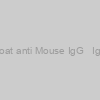 Goat anti Mouse IgG + IgM |
|
41R-1063 |
Fitzgerald |
1 mg |
EUR 115 |
|
|
|
Description: Goat anti Mouse IgG + IgM secondary antibody |
 Goat anti Mouse IgG + IgM |
|
41R-1064 |
Fitzgerald |
1 mg |
EUR 176 |
|
|
|
Description: Goat anti Mouse IgG + IgM secondary antibody |
) Goat anti Mouse IgG (HRP) |
|
43C-CB1569 |
Fitzgerald |
1 mg |
EUR 181 |
|
|
|
Description: Goat anti Mouse IgG secondary antibody (HRP) |
) Goat anti Mouse IgG (FITC) |
|
43R-1359 |
Fitzgerald |
2 mg |
EUR 167 |
|
|
|
Description: Goat anti Mouse IgG secondary antibody (FITC) |
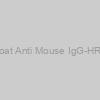 Goat Anti Mouse IgG-HRP |
|
E61I00503 |
EnoGene |
1mg |
EUR 345 |
 Polyclonal Antibody) Goat Anti Rat Igg (Mouse Adsorbed) Polyclonal Antibody |
|
CPBT-66038GR |
Creative Diagnostics |
0.5 mg |
EUR 920.4 |
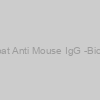 Goat Anti Mouse IgG -Biotin |
|
E61I00502 |
EnoGene |
1mg |
EUR 345 |
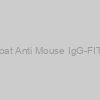 Goat Anti Mouse IgG-FITC |
|
E61I00504 |
EnoGene |
1mg |
EUR 431.25 |
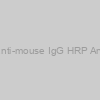 Goat anti-mouse IgG HRP Antibody |
|
E8HA1006 |
EnoGene |
100ul |
EUR 225 |
|
Description: Available in various conjugation types. |
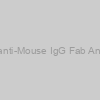 Goat anti-Mouse IgG Fab Antibody |
|
abx401416-1ml |
Abbexa |
1 ml |
EUR 543.6 |
|
|
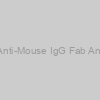 Goat Anti-Mouse IgG Fab Antibody |
|
abx401416-200g |
Abbexa |
200 µg |
EUR 350 |
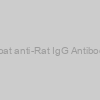 Goat anti-Rat IgG Antibody |
|
abx401071-1mg |
Abbexa |
1 mg |
EUR 393.6 |
|
|
 Goat anti-Rat IgG Antibody |
|
abx401552-05mg |
Abbexa |
0.5 mg |
EUR 477.6 |
|
|
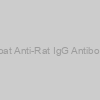 Goat Anti-Rat IgG Antibody |
|
abx401552-100g |
Abbexa |
100 µg |
EUR 300 |
 Antibody) Anti- Goat Anti Rabbit IgG (HL) Antibody |
|
GWB-FFA3B2 |
GenWay Biotech |
1 mg |
Ask for price |
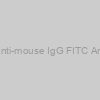 Goat anti-mouse IgG FITC Antibody |
|
E8HA1003 |
EnoGene |
100ul |
EUR 225 |
|
Description: Available in various conjugation types. |
 Antibody) Anti- Goat Anti Chicken IgG (HL) Antibody |
|
GWB-EBA8A6 |
GenWay Biotech |
1 mg |
Ask for price |
 Polyclonal Antibody) Goat Anti Mouse Igg (Multispecies Adsorbed) Polyclonal Antibody |
|
CPBT-68095GM |
Creative Diagnostics |
1 mg |
EUR 858 |
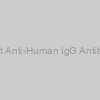 Goat Anti-Human IgG Antibody |
|
abx120111-5mg |
Abbexa |
5 mg |
EUR 560.4 |
|
|
) Goat anti Mouse IgG (rhodamine) |
|
43R-1360 |
Fitzgerald |
1 mg |
EUR 116 |
|
|
|
Description: Goat anti Mouse IgG secondary antibody (rhodamine) |
 Goat Anti-Rabbit IgG Antibody |
|
20-abx400049 |
Abbexa |
-
Ask for price
-
Ask for price
-
Ask for price
|
|
|
|
 Goat Anti-Rabbit IgG Antibody |
|
abx400049-50g |
Abbexa |
50 µg |
EUR 312.5 |
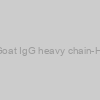 Mouse anti Goat IgG heavy chain-HRP Antibody |
|
48068 |
SAB |
100ul |
EUR 429 |
 Mouse anti Goat IgG heavy chain-HRP Antibody |
|
48068-100ul |
SAB |
100ul |
EUR 399.6 |
 Mouse anti Goat IgG heavy chain-HRP Antibody |
|
48068-50ul |
SAB |
50ul |
EUR 286.8 |
 Mouse anti goat IgG lighty chain-HRP Antibody |
|
48078 |
SAB |
100ul |
EUR 429 |
 Mouse anti goat IgG lighty chain-HRP Antibody |
|
48078-100ul |
SAB |
100ul |
EUR 399.6 |
 Mouse anti goat IgG lighty chain-HRP Antibody |
|
48078-50ul |
SAB |
50ul |
EUR 286.8 |
 Antibody) Goat anti-mouse IgG (H+L) Antibody |
|
E8G1006-1 |
EnoGene |
100ul |
EUR 225 |
|
Description: Available in various conjugation types. |
 Antibody) Goat anti-Mouse IgG (H&L) Antibody |
|
E61C00401 |
EnoGene |
100μg/100μl |
EUR 225 |
|
Description: Available in various conjugation types. |
 Antibody) Goat anti-Mouse IgG (H/L) Antibody |
|
abx401108-2mg |
Abbexa |
2 mg |
EUR 577.2 |
|
|
 Antibody) Goat anti-Mouse IgG (H/L) Antibody |
|
abx401444-05mg |
Abbexa |
0.5 mg |
EUR 477.6 |
|
|
 Antibody) Goat Anti-Mouse IgG (H+L) Antibody |
|
abx242874-300ul |
Abbexa |
300 ul |
EUR 260.4 |
|
|
 Antibody) Goat Anti-Mouse IgG (H&L) Antibody |
|
20-abx134841 |
Abbexa |
-
Ask for price
-
Ask for price
|
|
|
|
 Antibody) Goat Anti-Mouse IgG (H+L) Antibody |
|
abx019221-1mg |
Abbexa |
1 mg |
EUR 410.4 |
|
|
 Antibody) Goat Anti-Mouse IgG (H+L) Antibody |
|
abx023421-1mg |
Abbexa |
1 mg |
EUR 343.2 |
|
|
 Antibody) Goat Anti-Mouse IgG (H+L) Antibody |
|
abx023427-5mg |
Abbexa |
5 mg |
EUR 594 |
|
|
 Antibody) Goat Anti-Mouse IgG (H+L) Antibody |
|
abx023429-2mg |
Abbexa |
2 mg |
EUR 343.2 |
|
|
 Antibody) Goat Anti-Mouse IgG (H+L) Antibody |
|
abx023431-1mg |
Abbexa |
1 mg |
EUR 360 |
|
|
 Antibody) Goat Anti-Mouse IgG (H+L) Antibody |
|
abx023432-5mg |
Abbexa |
5 mg |
EUR 393.6 |
|
|
 antibody) Goat Anti-Mouse IgG (H+L) antibody |
|
STJ99561-100l |
St John's Laboratory |
100 µl |
EUR 92.4 |
|
Description: Unconjugated Goat monoclonal to Mouse IgG (H+L) antibody |
 antibody) Goat Anti-Mouse IgG (H+L) antibody |
|
STJ99561-1mL |
St John's Laboratory |
1 mL |
EUR 248.4 |
|
Description: Unconjugated Goat monoclonal to Mouse IgG (H+L) antibody |
 antibody) Goat Anti-Mouse IgG (H+L) antibody |
|
STJ99665 |
St John's Laboratory |
200 µl |
EUR 236.4 |
|
Description: HRP conjugated Goat polyclonal to Mouse IgG (H+L) |
 antibody) Goat Anti-Mouse IgG (H+L) antibody |
|
STJ99667 |
St John's Laboratory |
200 µl |
EUR 236.4 |
|
Description: FITC conjugated Goat polyclonal to Mouse IgG (H+L) |
 antibody) Goat Anti-Mouse IgG (H+L) antibody |
|
STJ99669 |
St John's Laboratory |
200 µl |
EUR 236.4 |
|
Description: BIOTIN conjugated Goat polyclonal to Mouse IgG (H+L) |
 antibody) Goat Anti-Mouse IgG (H+L) antibody |
|
STJ99671 |
St John's Laboratory |
200 µl |
EUR 236.4 |
|
Description: Unconjugated Goat polyclonal to Mouse IgG (H+L) |
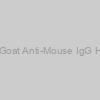 Goat Anti-Mouse IgG H&L Antibody |
|
abx007441-100g |
Abbexa |
100 µg |
Ask for price |
 Goat Anti-Mouse IgG H&L Antibody |
|
abx007441-10g |
Abbexa |
10 µg |
EUR 175 |
 Goat Anti-Mouse IgG H&L Antibody |
|
abx007441-200g |
Abbexa |
200 µg |
Ask for price |
 Goat Anti-Mouse IgG H&L Antibody |
|
abx242874-96tests |
Abbexa |
96 tests |
EUR 187.5 |
 Goat Anti-Mouse IgG H&L Antibody |
|
abx134841-01mg |
Abbexa |
0.1 mg |
EUR 162.5 |
 Goat Anti-Mouse IgG H&L Antibody |
|
abx023427-400l |
Abbexa |
400 µl |
Ask for price |
 Goat Anti-Mouse IgG H&L Antibody |
|
abx023427-80l |
Abbexa |
80 µl |
EUR 575 |
 Goat Anti-Mouse IgG H&L Antibody |
|
abx023432-400l |
Abbexa |
400 µl |
Ask for price |
 Goat Anti-Mouse IgG H&L Antibody |
|
abx023432-80l |
Abbexa |
80 µl |
EUR 375 |
 Goat Anti-Mouse IgG H&L Antibody |
|
abx019221-400l |
Abbexa |
400 µl |
Ask for price |
 Goat Anti-Mouse IgG H&L Antibody |
|
abx019221-80l |
Abbexa |
80 µl |
EUR 275 |
 Goat Anti-Mouse IgG H&L Antibody |
|
abx401108-100l |
Abbexa |
100 µl |
EUR 375 |
 Goat Anti-Mouse IgG H&L Antibody |
|
abx401444-200g |
Abbexa |
200 µg |
EUR 300 |
 Goat anti-mouse IgG Rhodamine Antibody |
|
E8HA1017 |
EnoGene |
100μl |
EUR 225 |
|
Description: Available in various conjugation types. |
 Antibody (ALP)) Goat Anti-Mouse IgG (Fc) Antibody (ALP) |
|
abx023404-1ml |
Abbexa |
1 ml |
EUR 718.8 |
|
|
 Antibody (HRP)) Goat Anti-Mouse IgG (Fc) Antibody (HRP) |
|
abx023406-2ml |
Abbexa |
2 ml |
EUR 718.8 |
|
|
) Goat Anti Mouse Igg Polyclonal Antibody,RPE (RAT ADSORBED) |
|
CPBT-68086GM |
Creative Diagnostics |
100 TEST |
EUR 858 |
) Goat Anti Mouse Igg Polyclonal Antibody,HRP (RAT ADSORBED) |
|
CPBT-68087GM |
Creative Diagnostics |
0.5 mg |
EUR 670.8 |
 Antibody (FITC)) Goat Anti-Mouse IgG (Fc) Antibody (FITC) |
|
abx023403-2mg |
Abbexa |
2 mg |
EUR 644.4 |
|
|
 Antibody) Anti- Goat IgG (Fc) Antibody |
|
GWB-2FE220 |
GenWay Biotech |
2 mg |
Ask for price |
|
|
) Goat Anti Mouse Igg Polyclonal Antibody,FITC (RAT ADSORBED) |
|
CPBT-68079GM |
Creative Diagnostics |
0.5 mg |
EUR 670.8 |
 Antibody (Biotin)) Goat Anti-Mouse IgG (Fc) Antibody (Biotin) |
|
abx023401-2ml |
Abbexa |
2 ml |
EUR 693.6 |
|
|
) Goat Anti-Mouse IgG Fc Antibody (Biotin) |
|
abx023401-400l |
Abbexa |
400 µl |
Ask for price |
) Goat Anti-Mouse IgG Fc Antibody (Biotin) |
|
abx023401-80l |
Abbexa |
80 µl |
EUR 762.5 |
 (H&L)) Donkey anti Goat IgG Antibody (Goat anti Donkey) (H&L) |
|
GWB-CF7AB3 |
GenWay Biotech |
1.5 mg |
Ask for price |
) Goat anti Mouse IgG (H + L) |
|
41C-CB1501 |
Fitzgerald |
2 mg |
EUR 193 |
|
|
|
Description: Goat anti Mouse IgG (H + L) secondary antibody |
) Goat anti Mouse IgG (H + L) |
|
41R-1051 |
Fitzgerald |
2 mg |
EUR 127 |
|
|
|
Description: Goat anti Mouse IgG (H + L) secondary antibody |
) Goat anti Mouse IgG (H + L) |
|
41R-1052 |
Fitzgerald |
2 mg |
EUR 115 |
|
|
|
Description: Goat anti Mouse IgG (H + L) secondary antibody |
) Goat anti Mouse IgG (H + L) |
|
41R-1053 |
Fitzgerald |
2 mg |
EUR 128 |
|
|
|
Description: Goat anti Mouse IgG (H + L) secondary antibody |
) Goat anti Mouse IgG (H + L) |
|
41R-1054 |
Fitzgerald |
2 mg |
EUR 176 |
|
|
|
Description: Goat anti Mouse IgG (H + L) secondary antibody |
) Goat anti Mouse IgG (H + L) |
|
41R-1055 |
Fitzgerald |
2 mg |
EUR 299 |
|
|
|
Description: Goat anti Mouse IgG (H + L) secondary antibody |
) Goat anti Mouse IgG (H + L) |
|
41R-1056 |
Fitzgerald |
1 mg |
EUR 133 |
|
|
|
Description: Goat anti Mouse IgG (H + L) secondary antibody |
) Goat anti Mouse IgG (H + L) |
|
41R-1057 |
Fitzgerald |
1 mg |
EUR 167 |
|
|
|
Description: Goat anti Mouse IgG (H + L) secondary antibody |
) Goat anti Mouse IgG (H + L) |
|
41R-1100 |
Fitzgerald |
2 mg |
EUR 176 |
|
|
|
Description: Goat anti Mouse IgG (H + L) secondary antibody |
) Goat anti Mouse IgG (H + L) |
|
40-GM25 |
Fitzgerald |
100 ml |
EUR 399 |
|
|
|
Description: Goat anti Mouse IgG secondary antibody (H + L) |
) Goat anti- mouse IgG(H+L) |
|
FNab09848 |
FN Test |
100µg |
EUR 658.5 |
|
|
|
Description: Antibody raised against Goat mouse IgG(H+L) |
) Goat anti Mouse IgG (Fab'2) |
|
41C-CJ0207 |
Fitzgerald |
1 mg |
EUR 279 |
|
|
|
Description: Goat anti Mouse IgG secondary antibody (Fab'2) |
) Goat anti Mouse IgG (Fab'2) |
|
41C-CJ0213 |
Fitzgerald |
1 mg |
EUR 333 |
|
|
|
Description: Goat anti Mouse IgG secondary antibody (Fab'2) |
) Goat Anti Rat Igg Polyclonal Antibody,HRP (MOUSE ADSORBED) |
|
CPBT-66027GR |
Creative Diagnostics |
0.5 mg |
EUR 670.8 |
 Polyclonal Antibody,Alk. Phos.) Goat Anti Mouse Igg (H/L) Polyclonal Antibody,Alk. Phos. |
|
CPBT-68110GM |
Creative Diagnostics |
1 mg |
EUR 1132.8 |
 Polyclonal Antibody,Alk. Phos.) Goat Anti Mouse Igg (H/L) Polyclonal Antibody,Alk. Phos. |
|
CPBT-68115GM |
Creative Diagnostics |
0.5 mg |
EUR 889.2 |
) Goat anti Mouse IgG + IgM (HRP) |
|
43R-IG051hrp |
Fitzgerald |
1 mg |
EUR 181 |
|
|
|
Description: Goat anti Mouse IgG + IgM secondary antibody (HRP) |
 (Fc)) IgG Antibody (Goat anti Cat) (Fc) |
|
GWB-BED740 |
GenWay Biotech |
2 ml |
Ask for price |
) Goat anti Mouse IgG (Alk Phos) |
|
43R-1357 |
Fitzgerald |
1 mg |
EUR 208 |
|
|
|
Description: Goat anti Mouse IgG secondary antibody (Alk Phos) |
) Goat anti Mouse IgG + IgM (FITC) |
|
43R-1388 |
Fitzgerald |
1 mg |
EUR 167 |
|
|
|
Description: Goat anti Mouse IgG + IgM secondary antibody (FITC) |
) Goat anti Mouse IgG1 Antibody (HRP) |
|
20-abx239824 |
Abbexa |
-
Ask for price
-
Ask for price
|
|
|
|
) Goat anti Mouse IgG3 Antibody (HRP) |
|
20-abx239828 |
Abbexa |
-
Ask for price
-
Ask for price
|
|
|
|
) Goat anti Mouse IgG Fc (biotin) |
|
43R-1358 |
Fitzgerald |
2 mg |
EUR 208 |
|
|
|
Description: Goat anti Mouse IgG secondary antibody (biotin) |
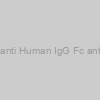 Goat anti Human IgG Fc antibody |
|
41-XG57 |
Fitzgerald |
1 G |
Ask for price |
|
|
|
Description: Affinity purified Goat anti Human IgG Fc antibody |
 Antibody) Goat anti-Cat IgG (Fc) Antibody |
|
abx401190-1mg |
Abbexa |
1 mg |
EUR 444 |
|
|
 Antibody) Goat anti-Pig IgG (Fc) Antibody |
|
abx401226-1mg |
Abbexa |
1 mg |
EUR 444 |
|
|
) Goat anti-Rat IgG Antibody (AP) |
|
abx401468-1ml |
Abbexa |
1 ml |
EUR 644.4 |
|
|
 (Fc)) IgG Antibody (Goat anti Horse) (Fc) |
|
GWB-98ED86 |
GenWay Biotech |
2 mg |
Ask for price |
 (Fc)) IgG Antibody (Goat anti Human) (Fc) |
|
GWB-6F7C45 |
GenWay Biotech |
0.5 ml |
Ask for price |
 (Fc)) IgG Antibody (Goat anti Human) (Fc) |
|
GWB-CDE49A |
GenWay Biotech |
0.5 ml |
Ask for price |
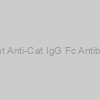 Goat Anti-Cat IgG Fc Antibody |
|
abx401190-100tests |
Abbexa |
100 tests |
Ask for price |
 Goat Anti-Cat IgG Fc Antibody |
|
abx401190-25tests |
Abbexa |
25 tests |
EUR 262.5 |
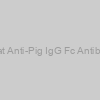 Goat Anti-Pig IgG Fc Antibody |
|
abx401226-100g |
Abbexa |
100 µg |
EUR 262.5 |
 (Rat Adsorbed) Polyclonal Antibody) Goat Anti Mouse Igg (H/L) (Rat Adsorbed) Polyclonal Antibody |
|
DPBT-67938GM |
Creative Diagnostics |
0.5 mg |
EUR 696 |
 ELISA Kit) Goat anti-toxoplasma IgG antibody (Anti-Tox IgG) ELISA Kit |
|
NSL0001Gt |
Sunlong |
96T |
EUR 528 |
|
|
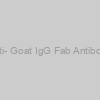 Anti- Goat IgG Fab Antibody |
|
GWB-521056 |
GenWay Biotech |
5 mg |
Ask for price |
|
|
) Goat anti-Rat IgG Antibody (RPE) |
|
abx401075-05mg |
Abbexa |
0.5 mg |
EUR 744 |
|
|
 (Fc)) IgG Antibody (Goat anti Rabbit) (Fc) |
|
GWB-CC0EA6 |
GenWay Biotech |
5 mg |
Ask for price |
) Goat Anti-Rat IgG Antibody (ALP) |
|
abx401468-100tests |
Abbexa |
100 tests |
EUR 425 |
 Antibody) Goat anti-Horse IgG (T) Antibody |
|
abx401217-1mg |
Abbexa |
1 mg |
EUR 444 |
|
|
 Antibody) Goat anti-Human IgG (Fd) Antibody |
|
abx401522-05mg |
Abbexa |
0.5 mg |
EUR 493.2 |
|
|
 Goat Anti-Human IgG Fc Antibody |
|
20-abx134790 |
Abbexa |
-
Ask for price
-
Ask for price
|
|
|
|
 Antibody) Goat Anti-Human IgG (Fc) Antibody |
|
abx023507-10ml |
Abbexa |
10 ml |
EUR 661.2 |
|
|
 Antibody) Goat Anti-Human IgG (Fc) Antibody |
|
abx023509-2mg |
Abbexa |
2 mg |
EUR 393.6 |
|
|
 Antibody) Goat Anti-Human IgG (Fc) Antibody |
|
abx023510-10ml |
Abbexa |
10 ml |
EUR 444 |
|
|
 Antibody) Goat Anti-Human IgG (Fc) Antibody |
|
abx023511-1mg |
Abbexa |
1 mg |
EUR 444 |
|
|
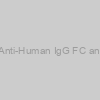 Goat Anti-Human IgG FC antibody |
|
STJ99582-100l |
St John's Laboratory |
100 µl |
EUR 109.2 |
|
Description: Unconjugated Goat monoclonal to Human IgG FC antibody |
 Goat Anti-Human IgG FC antibody |
|
STJ99582-1mL |
St John's Laboratory |
1 mL |
EUR 616.8 |
|
Description: Unconjugated Goat monoclonal to Human IgG FC antibody |
 Goat Anti-Human IgG Fc Antibody |
|
abx134790-01mg |
Abbexa |
0.1 mg |
EUR 187.5 |
 Goat Anti-Human IgG Fc Antibody |
|
abx023510-400l |
Abbexa |
400 µl |
Ask for price |
 Goat Anti-Human IgG Fc Antibody |
|
abx023510-80l |
Abbexa |
80 µl |
EUR 425 |
 Goat Anti-Human IgG Fc Antibody |
|
abx023511-400l |
Abbexa |
400 µl |
Ask for price |
 Goat Anti-Human IgG Fc Antibody |
|
abx023511-80l |
Abbexa |
80 µl |
EUR 462.5 |
) Goat Anti-Human IgG Antibody (PE) |
|
abx401057-50g |
Abbexa |
50 µg |
EUR 462.5 |
 Antibody) Goat Anti-Horse IgG (T) Antibody |
|
abx401217-100g |
Abbexa |
100 µg |
EUR 287.5 |
 Antibody) Goat Anti-Human IgG (Fd) Antibody |
|
abx401522-100g |
Abbexa |
100 µg |
EUR 312.5 |
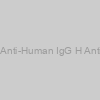 Goat Anti-Human IgG H Antibody |
|
abx401523-100g |
Abbexa |
100 µg |
EUR 300 |
 Antibody (HRP)) Goat Anti-Mouse IgG (gamma) Antibody (HRP) |
|
abx023412-2mg |
Abbexa |
2 mg |
EUR 444 |
|
|
 Antibody (HRP)) Goat Anti-Mouse IgG (gamma) Antibody (HRP) |
|
abx023412-400l |
Abbexa |
400 µl |
Ask for price |
 Antibody (HRP)) Goat Anti-Mouse IgG (gamma) Antibody (HRP) |
|
abx023412-80l |
Abbexa |
80 µl |
EUR 400 |
) Goat anti-Human IgG Antibody (RPE) |
|
abx401057-05mg |
Abbexa |
0.5 mg |
EUR 644.4 |
|
|
 Antibody) Goat Anti-Rabbit IgG (FC) Antibody |
|
abx024171-2ml |
Abbexa |
2 ml |
EUR 727.2 |
|
|
In contrast, the Animal Science Laboratory Teaching Methods course remained consistent in format through the transition to online because students were still able to participate in discussion-based activities via Zoom meetings each week due to the small class size, which helped to maintain student engagement. However, the final teaching experience was modified to an alternative assignment. The alternate assignment included self-reflection and course evaluation that will help to improve both the Farm Animal Production Systems laboratory and the Animal Science Teaching Methods course in the future. Although COVID-19 has been a challenge that disrupted traditional courses, it has provided opportunities for a traditionally hands-on discipline, such as animal science, to more effectively engage students via an online platform.
